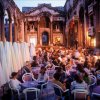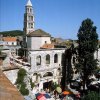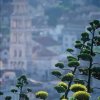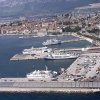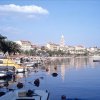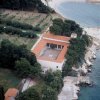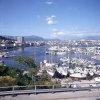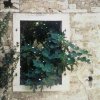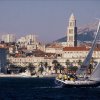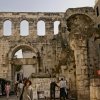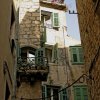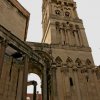SPLIT
The second-largest city in Croatia, Split (Spalato in Italian) is a great place to see Dalmatian life as it's really lived. Free of mass tourism and always buzzing, this is a city with just the right balance of tradition and modernity. Step inside Diocletian's Palace (a Unesco World Heritage site and one of the world's most impressive Roman monuments) and you'll see dozens of bars, restaurants and shops thriving amid the atmospheric old walls where Split life has been going on for thousands of years. Split's unique setting and exuberant nature make it one of the most delectable cities in Europe. The dramatic coastal mountains are the perfect backdrop to the turquoise waters of the Adriatic and you'll get a chance to appreciate the gorgeous Split cityscape when making a ferry journey to or from the city.Split is often seen mainly as a transport hub to the hip nearby islands (which, indeed, it is), but the city has been sprucing itself up and attracting attention by renovating the old Riva (seafront) and replacing the former cement strolling ground with a shiny, new marble look. Even though the modern transformation hasn't pleased all the locals, the new Riva is a beauty. The growing tourist demand also means that Split's city authorities are under pressure to expand the city's transport resources, and there's talk that in the near future the currently very handy bus station may be moved further out to make way for the harbour expansion (for big, shiny yachts and cruisers) and luxury hotels.
HISTORY
Split achieved fame when the Roman emperor Diocletian (AD 245.313), noted for his persecution of early Christians, had his retirement palace built here from 295 to 305. After his death the great stone palace continued to be used as a retreat by Roman rulers. When the nearby colony of Salona (now Solin) was abandoned in the 7th century, many of the Romanised inhabitants fled to Split and barricaded themselves behind the high palace walls, where their descendants live to this day.First the Byzantine Empire and then Croatia controlled the area, but from the 12th to the 14th centuries medieval Split enjoyed a large measure of autonomy, which favoured its development. The western part of the old town around Narodni Trg, which dates from this time, became the focus of municipal life, while the area within the palace walls continued as the ecclesiastical centre. In 1420 the Venetians. conquering of Split led to its slow decline. During the 17th century, strong walls were built around the city as a defence against the Ottomans. In 1797 the Austrians arrived; they remained until 1918, with only a brief interruption during the Napoleonic Wars.
ORIENTATION
The bus, train and ferry terminals are clustered on the eastern side of the harbour, a short walk from the old town .Obala Hrvatskog Narodnog Preporoda . commonly known as Riva (the waterfront promenade) . is your best central reference point in Split. Most of the large hotels and the best restaurants, nightlife and beaches lie east of the harbour along Ba vice, Firule, Zenta and Trstenik Bays. The wooded Marjan Hill (123m) dominates the western tip of the city and has many beaches at its foothills.



